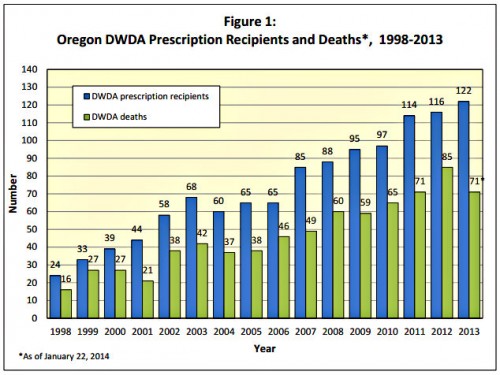In just over a week Lord Falconer’s bill on assisted dying will have its second reading in the House of Lords. Opinion seems to be moving in its favour. The British Medical Journal has published an editorial in favour, recognising that increasing numbers of medical people support it.
A powerful voice was added at the end of June when the Supreme Court turned down the appeals of three people demanding the right to die but, in a judgement that revealed increasing exasperation with timorous politicians, 5 of the 9 judges concluded that they had the right to declare that the present law breaches the right to a private life. Were they to do so, Parliament would be forced to act.
It looks as if the tide is unstoppable. Sooner rather than later we’ll have an assisted dying law in England and Wales. The Scots seem to be headed the same way.
If this is how the majority sees it, it’s not surprising that they’re not in campaigning mode. Most of the noise is being made by those campaigning against, who have no such complacency to comfort them.
Under the alarming headline Oregon – steady annual increase in assisted suicide cases sounds warning to UK, Dr Peter Saunders, writing for the Christian Medical Comment blog, predicts that we can expect just that in the UK. The inference is that things have got out of hand in Oregon – a predictable unintended consequence.
Why does he quote Oregon? Because our law will be based on theirs, passed in 1998.
And he’s right. The numbers are climbing steadily as you can see from the chart below [Source].
Why are the numbers climbing? And does it matter? In other words, are things getting out of control in Oregon? Are disabled and vulnerable people being despatched as people said they would be?
The answer would seem to be no. If you draft a law carefully, you get what you legislate for. It cannot be denied that Dr Saunders and his ilk serve a useful purpose at the drafting stage.
What we are seeing, though, is the substitution of the Hippocratic Oath (‘First, do no harm’) with the overriding concept of respect for patient autonomy. It’s a big shift.
Back to the rising numbers in Oregon, the explanation would seem to be that it’s all down, not to unintended consequences, but to rising awareness of the availability of physician-assisted suicide brought about by those in favour of it. A powerfully persuasive factor has been the award-winning film, How To Die In Oregon (trailer at the top of the page). All in all, probably nothing to get too worried about. Dr Saunders, basing his figures on Oregon’s, reckons around 1232 Brits will kill themselves annually.
The social profile of those who choose to do themselves in is interesting. More men than women do it, more whites than other ethnic groups, and most because they have lost autonomy and all joy in life. The education profile is interesting, too – below.
In Britain the debate is possibly best exemplified by the opposing views of Archbishop Welby and his predecessor, Lord Carey. Welby argues from principle: “Compassion literally means ‘to suffer with'”. The greater the suffering, the greater the compassion required. Carey, on the other hand, argues from experience. It was the Nicklinson business that changed his mind: “The old philosophical certainties have collapsed in the face of the reality of needless suffering.”
British funeral celebrants are beginning to report funerals they have conducted for people who deliberately ended their suffering. They were beautiful and respectful of the choice. It would be good to hear from you if you have had any experience of this.


